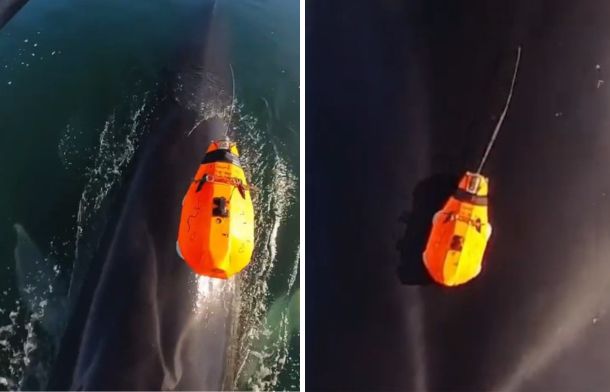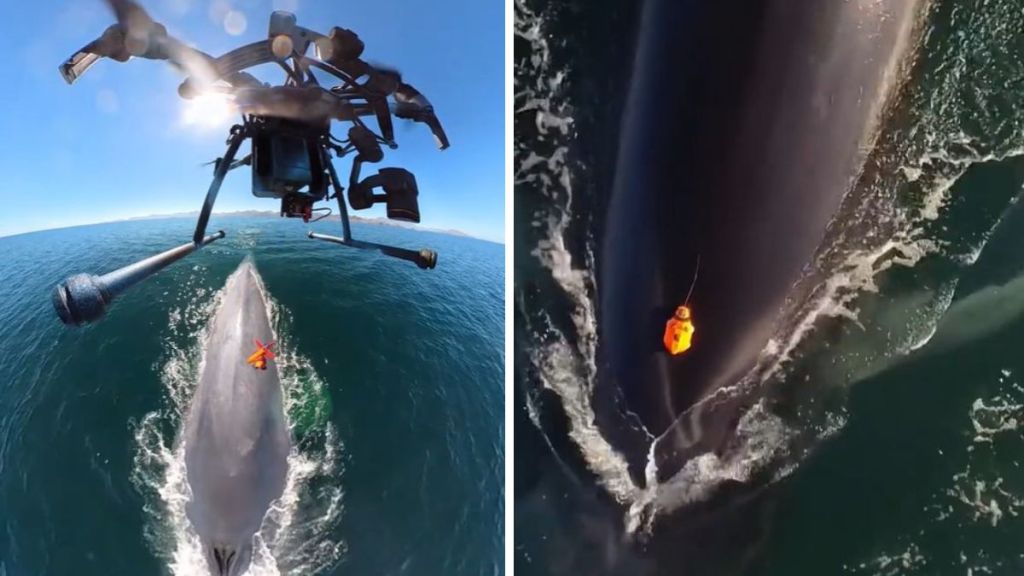The “Snotbot” drone is an anomaly in the world of unpronounceable scientific names. The drones were developed for a specific purpose: to collect whale snot. They fly through the blow of whales in the open ocean, collecting discharge samples as the whales exhale. While it may not sound scientific, the Snotbot drone helps analyze whale genetics, DNA, and hormones.
Videos by InspireMore
Whale tagging programs help scientists discover more about these underwater behemoths. Traditional tagging programs can be dangerous and invasive for humans and whales. Whale Alliance discovered a new use for its Snotbot drones in 2022, and the innovative approach to whale tagging has revolutionized the entire game.
Whale data tags are unobtrusive and noninvasive. The tiny devices have cameras and sensors to collect whale movement data. Researchers use Snotbot drones to drop the small devices onto the backs of whales. The little tags resemble brightly colored mice and adhere using suction cups.

Drone pilots maneuver the drones like a skilled bomber pilot above a whale as it surfaces. The Snotbot tagging device drops from the drone onto the whale’s back. Once in place, the tags begin collecting data that helps us understand whales. The program has drone-deployed more than 100 tags on six species of whale.
Using the Snotbot drones to deploy whale tags lets researchers study the large animals more in-depth. The efficient and effective method allows scientists to tag and monitor endangered species without harm. The Snotbot drones are less intrusive and are an excellent alternative for this vital task.
The tags remain attached to the whale for about 24 hours before naturally falling off. During that time, they send data that help scientists learn more about our undersea neighbors.
Please share.
You can find the source of this story’s featured image here and here.
Want to be happier in just 5 minutes a day? Sign up for Morning Smile and join over 455,000+ people who start each day with good news.


